Cervantes and the Spanish search for his lost tomb
- Published
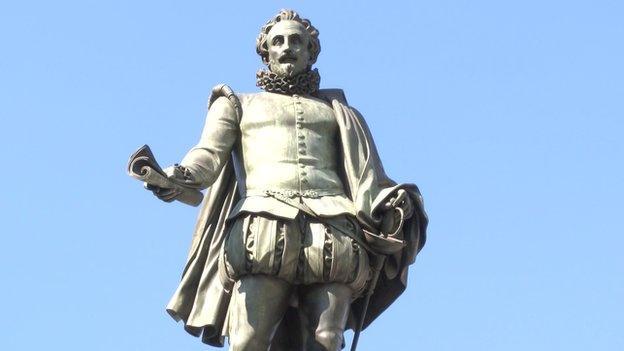
A few fragments of bone are all that is left of Miguel de Cervantes, author of Don Quixote. His tomb, missing for centuries, has been found in a convent in Madrid, external.
But how were the remains of one of Spain's greatest writers lost for nearly 400 years?
"At first, I took it as a bit of a joke," said Luis Avial, an expert in ground-penetrating radar and the man who started the search.
According to records, the grave of the writer who pioneered the modern novel was lost in the Convent of the Barefoot Trinitarians, where he had asked to be buried after his death in 1616.
The Trinitarians had helped free Cervantes from five years of slavery in Algiers. Five years after he was captured by pirates during his soldiering days, the religious order helped pay for his ransom in gold.
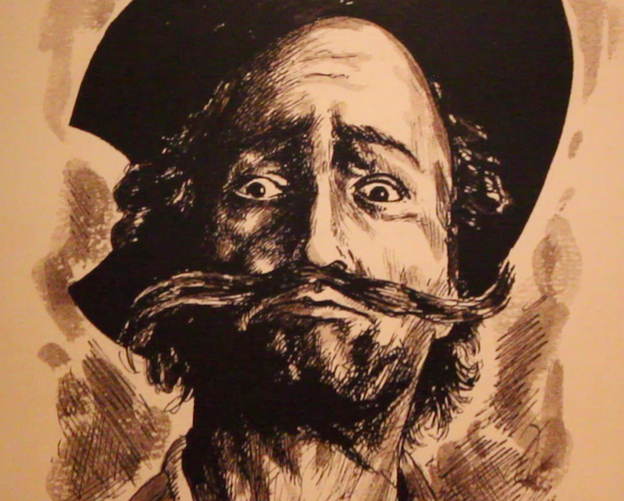
Don Quixote, as shown in this illustration from the Spanish National Library
'Unjustly forgotten'
There is even a stone plaque on a wall at the convent commemorating the rescue and the writer's wish to be buried there.
But the location of his tomb was forgotten after his bones were moved to the convent's present location in the late 17th Century.
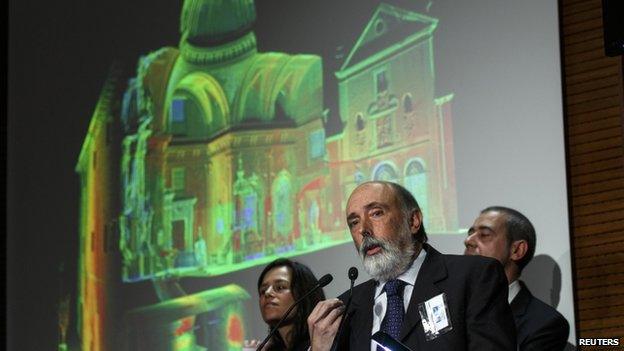
Prof Francisco Etxeberria explained the excavation of the crypt within the convent
Centuries passed and, although his story of the knight errant who tilts at windmills became one of the most widely read books in the world, no-one came looking for Cervantes.
"It is a bit embarrassing, for example in England we compare him to Shakespeare," said Mr Avial. "Cervantes is an eminent literary figure who has been unjustly forgotten in his tomb."
"He was a person who suffered captivity, persecution, forgetfulness and the little appreciation of his person and his work," said Pedro Corral, head of art, sport and tourism at Madrid city council.
But securing permission to start the search proved harder than expected. The convent building is protected and still has nuns cloistered within its red brick walls.
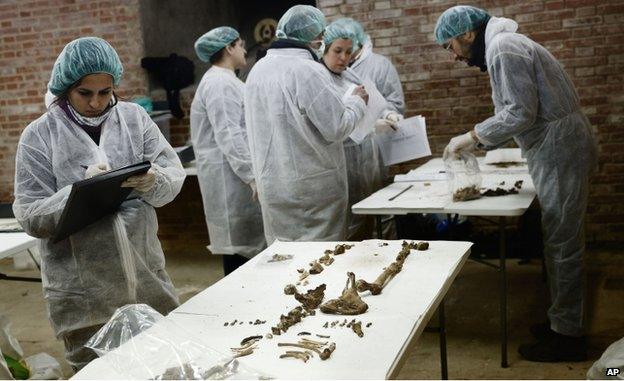
Researchers believe the bodies were piled on top of each other when they were moved to the crypt
Dusty shelves
It took four years of negotiations with everyone from the mayor of Madrid to the city's archbishop to get the agreement and the funding needed to begin.
The search started with a sweep of the convent floor using 3D scanners and ground-penetrating radar to help pinpoint the excavation site - a crypt that no-one had entered for 40 years.
In January, the team of researchers, led by renowned forensic scientist Prof Francisco Etxeberria, was finally ready to move underground and set up its makeshift lab.
Its first surprise came after the removal of some dusty old shelves. The researchers could see the outlines of tombs on the floor.
"As the floor was excavated, a first layer began to appear and that is when we found the children," said historian Fernando de Prado.
Almost 300 infants were found buried inside the crypt.
But the walls held an even bigger surprise. Using long, thin endoscopes to peer through the stone, the team was able to explore 33 niches.
The dankness of the tomb had left a confusing mix of bone, wood and fabric and the content of each alcove had to be carefully worked through.
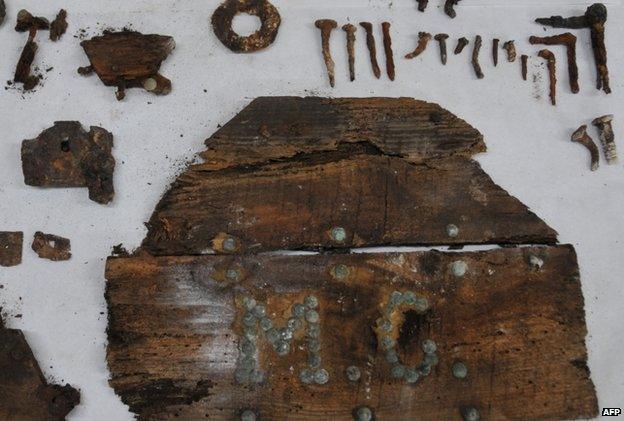
The dampness within the crypt left the remnants of the tomb damaged and corroded
The team's excitement grew when a group of adults was found within one of the niches.
Using old death records, the team realised that the number of male and female bodies matched the records of people who had been buried with Cervantes in the old church and then moved.
The team believe that the bodies were piled together and placed inside the crypt.
"We have confidence that it is the group of people that were buried with Cervantes," said lead archaeologist Almudena Garcia Rubio.

Miguel de Cervantes - Father of modern novel
1547: Born near Madrid
1571: Shot and wounded at Battle of Lepanto
1575: Captured and enslaved for five years in Algiers
1605: Publishes first part of The Ingenious Gentleman Don Quixote of La Mancha, second part in 1615. Don Quixote is man obsessed with chivalry who sets out in search of adventure on his ageing horse Rocinante and with his faithful squire Sancho Panza
1616: Cervantes dies aged 68, with six teeth remaining. Buried at Convent of Barefoot Trinitarians
Grave lost when convent rebuilt in late 17th Century

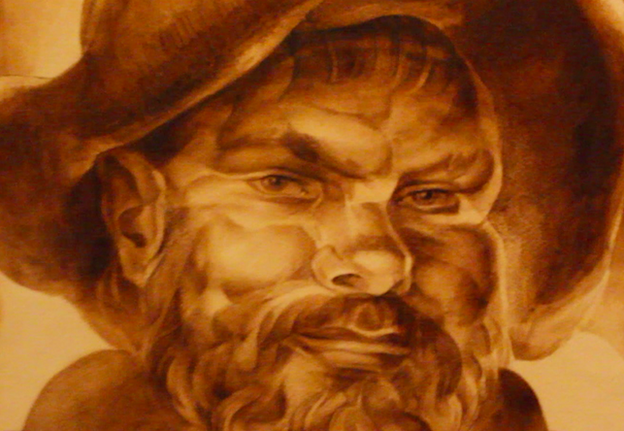
Don Quixote's faithful squire was Sancho Panza, as seen in this illustration at the Spanish National Library
Gunshot wounds
Confirming which bones belong to Cervantes may prove tricky.
There are currently no known family members living or dead that could be used to match his DNA.
His characteristic battle wounds will not be of much help either.
Cervantes was shot three times by a gun known as an arquebus at the Battle of Lepanto in 1571, leaving him with no use in his left hand.
But after 400 years there is not enough of his body left to check for wounds.
Despite all the difficulties, the searchers say they are confident they have found the creator of Don Quixote.
The scarcity of his bones does mean that some of the mysteries of his life may remained unsolved, such as the cause of his death.
"We still have to discover the human dimension of Cervantes," said Mr Corral.
For Cervantes biographer, Jorge Garcia Lopez, a professor of Spanish language, his fame as a writer overshadows everything else that we know about his life.
"We don't know what his worries were, his illusions, ambitions, hopes," he said.
400th anniversary
But analysing the DNA of those buried with him might help the team narrow down which bones are those of Cervantes.
Only then will he be reburied on the same quiet street and the crypt reopened to the public to coincide with the 400th anniversary of his death next year.
"These might be just the mortal remains of Cervantes but it is also a motivation for people to want to discover the person, that colossal figure of a good man, of Cervantes and his extraordinary literary work in the Spanish language," said Mr Corral.
Where he was once buried in poverty, he will now be laid to rest with ceremony. And this time, nobody will lose him.
- Published17 March 2015
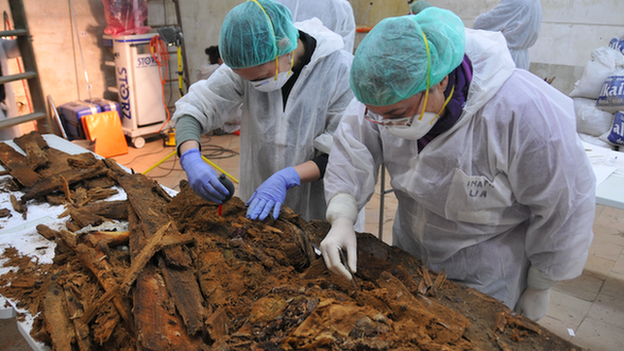
- Published9 June 2014
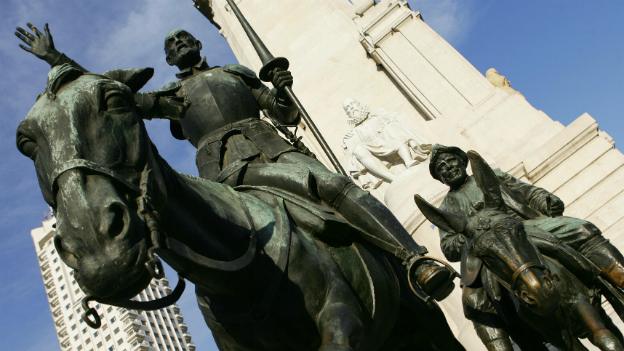
- Published28 April 2014
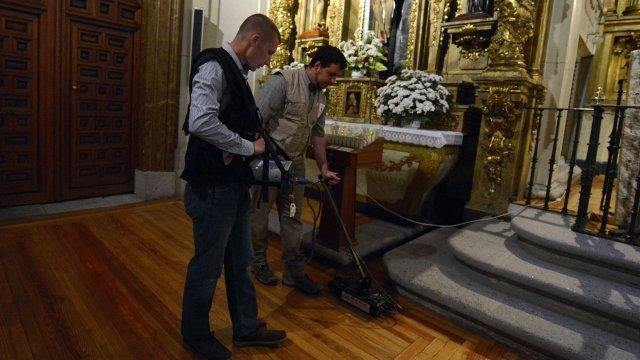
- Published25 April 2014
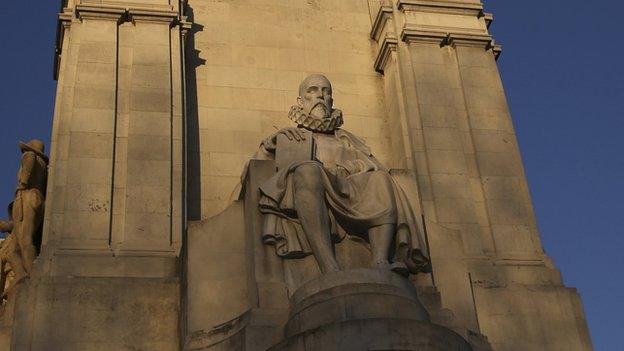
- Published20 September 2013

- Published21 August 2023
